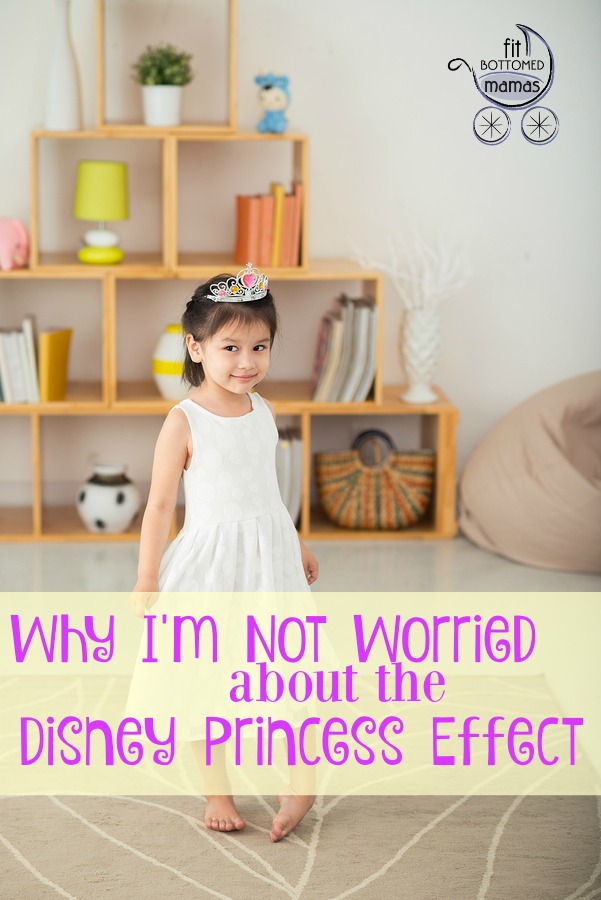Why I’m Not Worried About the Disney Princess Effect
 You’d have to try really hard to avoid princess culture. I was never a Disney princess-crazed child, so I certainly wasn’t looking to relive my childhood by pushing all of those types of toys on my daughter. But my 5-year-old gravitates to all things pink, all things princess and all things fancy and sparkly. Naturally, she wants the princess castles and fancy Cinderella dolls and when given the choice will choose pink over any other color. But it’s always being reported how this princess culture can have an impact on girls — lowering self-esteem, decreasing confidence, reinforcing gender norms. Interestingly, while it has a negative effect on girls, it does the opposite for boys, encouraging better body esteem and being more helpful.
You’d have to try really hard to avoid princess culture. I was never a Disney princess-crazed child, so I certainly wasn’t looking to relive my childhood by pushing all of those types of toys on my daughter. But my 5-year-old gravitates to all things pink, all things princess and all things fancy and sparkly. Naturally, she wants the princess castles and fancy Cinderella dolls and when given the choice will choose pink over any other color. But it’s always being reported how this princess culture can have an impact on girls — lowering self-esteem, decreasing confidence, reinforcing gender norms. Interestingly, while it has a negative effect on girls, it does the opposite for boys, encouraging better body esteem and being more helpful.
Thankfully, Disney princesses of late have been breaking the mold, at least a little. Frozen‘s Princess Anna is funny, goofy and brave — and she’s the one who saves the day, not any prince. Merida from Brave stands on her own two feet and bucks tradition by being especially feisty and headstrong. Disney Junior’s Sofia the First shows great character — doing what’s right and being kind and forgiving and accepting and inclusive. But even with this new brand of princess, there’s no denying that they’re all traditionally pretty, slender and mostly white.
So how do you let your child enjoy princesses without having her think she should look like one? Or act like one? Or think she needs to be saved by a prince on a white horse? If you’re a mom like me, you recognize the fantasy that is the princess while also encouraging other interests. Princesses don’t have to take over your house; they don’t have to take over your TV. I make sure we do plenty of screen time so that the kids are being exposed to lots of various characters — boy, girl, animal. (This is a joke, but also kind of true.) I get the Sofia Lego set — which sneaks in building and creativity with a character my kids love. I discourage any talk of “girls can’t play with that” or “boys don’t do that” and make it clear than anyone can play with any toy — unless it’s past bedtime then NO ONE GETS THE TOYS. It goes both ways too — when my son was 3, he wanted to dress up just like his sister and he walked the neighborhood dressed as Snow White. I still routinely paint his fingernails and toes — gender norms don’t mean anything to kids, they just see it as fun.
So yes, my daughter loves princesses. But she’ll put on her fancy dress to go outside and climb a tree and get it dirty in the mud. She’ll serve a tea party — filling the cups with rocks and twigs. She’ll run around and get as sweaty as her brother, if not more. She’s well rounded. We encourage plenty of creative play — art, Play-Doh. We get outside — bikes, trikes, sandboxes. I make sure we all get plenty of exercise, get dirty, splash in water, climb to the top of park structures.
So as parents, encourage strength. Encourage them to get dirty. Encourage a lot of other interests. Encourage your kids to be kind and tough. Eventually, they’ll grow out of the toys. But hopefully the lessons we’ve given as parents will last in the long term.
How do you combat princess culture in your house? —Erin
